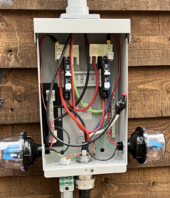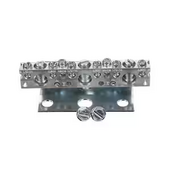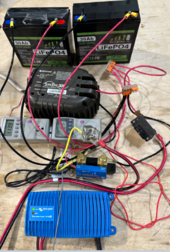Wago's are just fine for high current AC or DC applications. They are rated to 32 amps and just for fun I've ran them for hours at over 50 amps without any issues. I've loaned my FLIR to a buddy or I'd take a picture of the below set up and show you. I'm cycle testing some batteries at 30 amps. The batteries are warmer than the Wago's.
We use them all the time and have never had a problem. People say they are fire hazards but there's not any evidence to support that. "Pictures or it didn't' happen". I get it, it's fun to be in the "I'm an old school electrician" tribe (30+ year master electrician here) but I'm using WAGO's on chillers motors in $30 million dollar surgery centers and I sleep just fine. Life and death sort of stuff which I take very seriously.
Hands down the best wire connector out there is an appropriately rated safety switch. You can splice together wires of large size differences in a weatherproof enclosure and you get a free disconnect while you're at it. I've picked up dozens of them on
eBay for pennies on the dollar.
View attachment 209044








